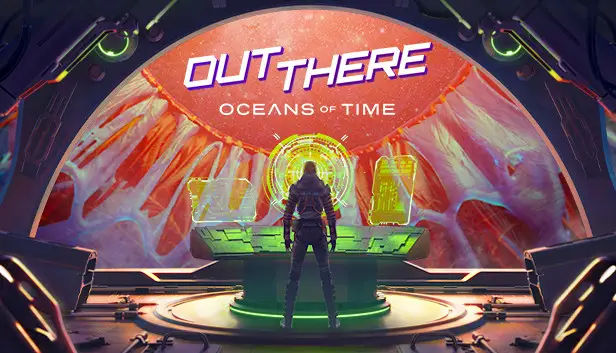Originally released in 2013, Out There was quite an interesting take on the seemingly dormant genre of space exploration and resource management. Instead of focusing on the bigger picture, the player was in control of a single ship travelling across the universe. After the release, Mi-clos studio decided to continue working on it to add features and smooth the edges. These efforts led to Omega, released in 2015. But that was seven years ago. Now begins a new chapter in the Out There series, with Oceans of Time. Let’s see what has been going on.
FOLLOWING A CLASSIC
The game follows in the footsteps of its predecessor – as we take control of Commander Nyx, exploring the galaxy in search of the evil Archon: a mysterious villain set on dominating the entire known universe. The gameplay, too, follows in the vein of the original. We move from galaxy to galaxy (and planet to planet), exploring every nook and cranny, gathering resources, finding new plot lines to unravel and, well, trying to survive.
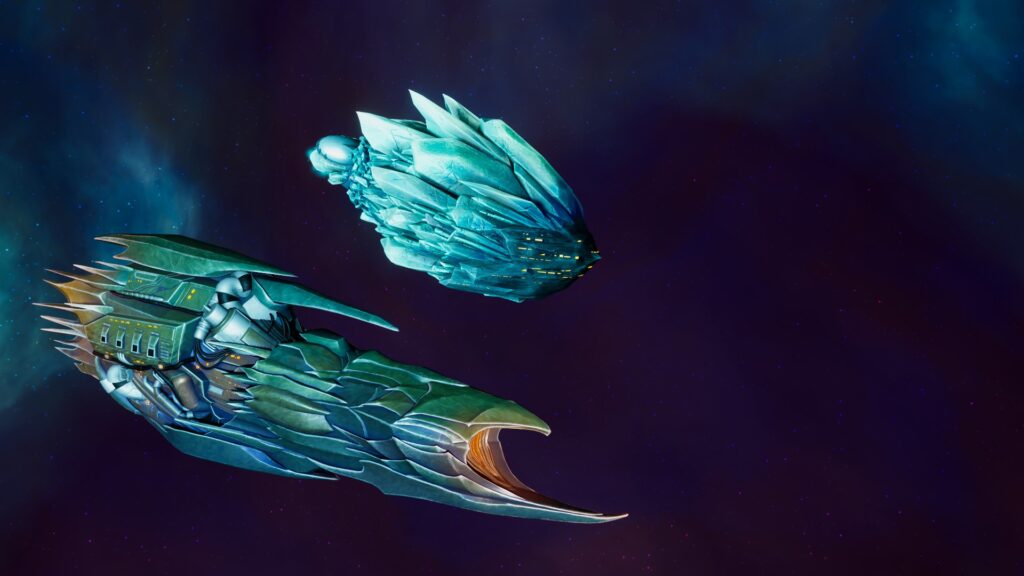
Each playthrough offers a new procedurally generated galaxy. Those are designed so that each one offers roughly equal survival chances. As such, there won’t be – hopefully – any unfair runs. Above all else, our crew requires a ship – with oxygen, hull points and fuel to maneuver around. All of this can be acquired by drilling planets’ core or launching a probe to extract gases – and then fuel. The player will have to learn which planets may contain useful resources and, naturally, always keep an eye out for the meteorites.
EXPLORE, LEARN, SURVIVE, IMPROVE

Planets might offer something other than just resources, however. Sometimes, our scanner will pick up anomalies. These need to be further analyzed. You do so by running the mouse cursor over the planet’s 3D map and watching the scanner as it reports the radiation levels. Once fully identified, we can send members of our crew (usually Nyx as well) to explore. During their explorations, they can recover artifacts or other useful items. The phase reminded me, for some reason, of the 2004 Sid Meier’s Pirates reboot. Our team will be moving in turns, on a hex grid. Although there is no combat, the alien terrain, on its own, is often deadly. Be careful – If Nyx dies, the game is over.
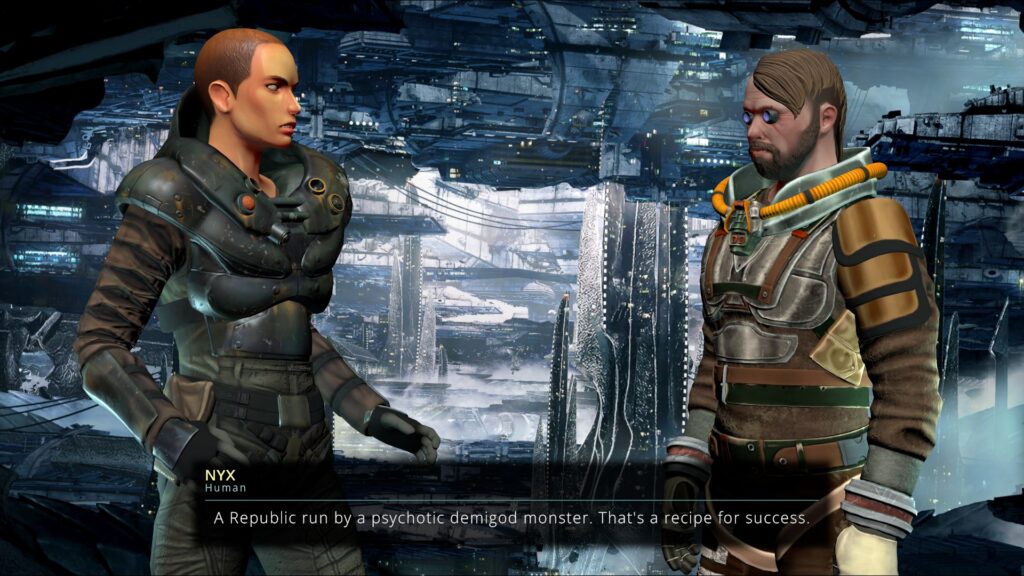
The various subquests we’ll stumble upon throughout the galaxy will ask us to make some difficult choices. Out There: Oceans of Time seems to reason, quite wisely, that “no important decision is made without losing something”. For example, we might decide to help a ship being attacked. But to do so we’ll have to put our own ship in the line of fire and thus lose hull points. Will the reward be worth it? We’ll only know once the decision has been made. It is a delicate balance between risk and reward, that can make for interesting runs.
MANAGEMENT, MANAGEMENT, MANAGEMENT!
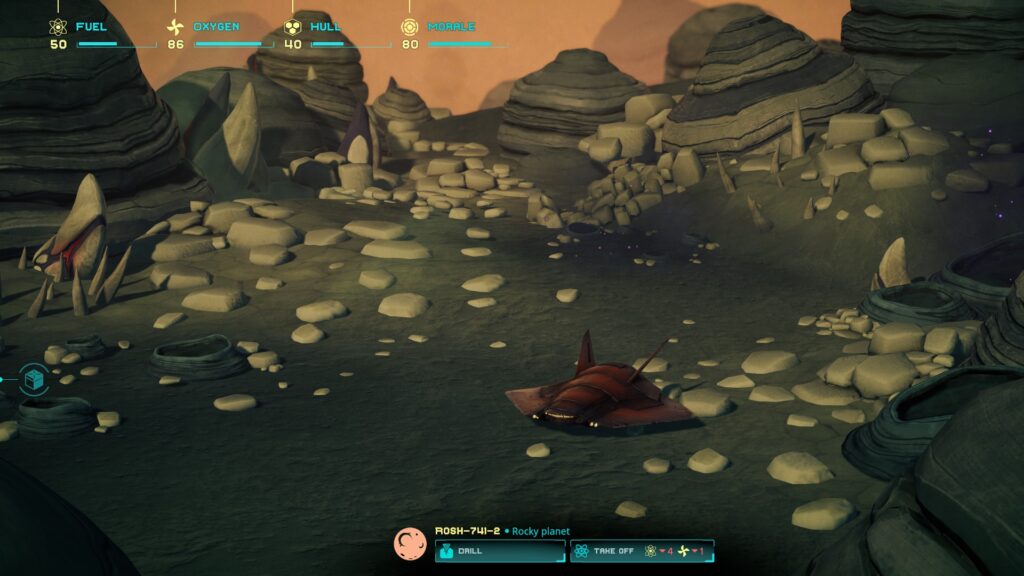
As mentioned, resource management is quite an important mechanic. Oceans of Time, in contrast to the 2D style of the original, features a very intuitive 3D interface for this purpose. Just click and drag each resource to stack, use, or discard them – definitely works like a charm. Swapping spaceships is also quite easy. Just embark on the new one, drag any cargo you want to take with you and, voilà. I wish moving was that easy in real life! Also – each ship has different stats, so it might be worthwhile to keep an eye out for any improvement on the one Nyx starts with.
Resource management also concerns the features we might want to equip our ship with. For example, an industrial refinery to produce resources by processing minerals. Or a mess hall to make our ship more comfortable – indeed, morale is also an important counter we’ll have to look out for. Failing a mission, for example, may heavily impact the crew’s well-being and lead to our eventual downfall.
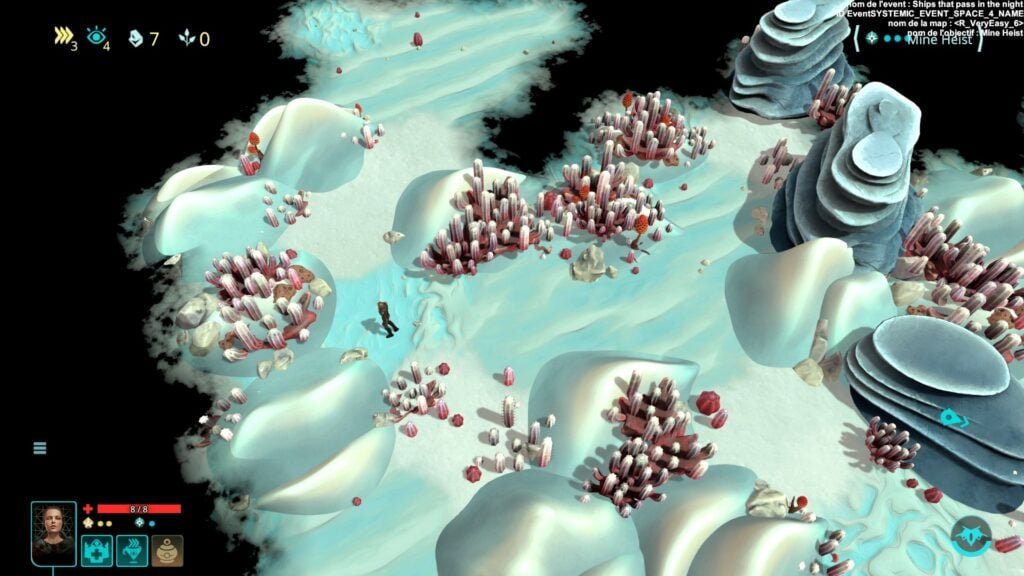
In terms of graphics, the sequel looks much less like a cartoon, compared to the original. Overall, the visuals took an overhaul, almost on par with an AAA game. Yet, this is perhaps a change that could easily alienate some players. Personally, I would say that while those improvements Oceans of Time brings to the table are undeniable – it did, however, lose a bit of personality with this more realistic approach.
Out There: Oceans of Time is shaping up to be a sequel of the “bigger and better” variety – quite the worthy follow-up to the original. This is a game that might easily please both the fans and the newcomers to the series. Look out for it during April 2022.

